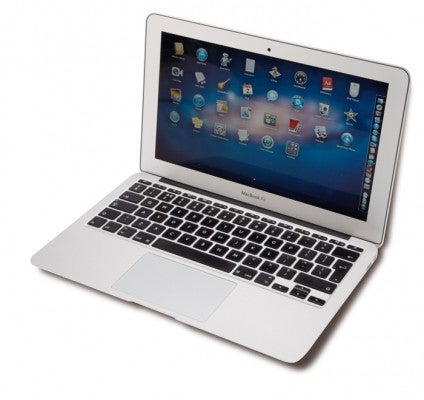A compact, light laptop with the power to edit images on the move
Apple Macbook Air Review
Photographers looking for a device to enable them to store, browse and edit their photos on the move would until recently have bought one of the variety of portable storage devices made by the likes of Epson, which are basically a hard drive with a screen.
However, the new generations of super-small laptops and netbooks offer an enticing alternative – one that can do a lot more than just store and display photos. The problem is that netbooks aren’t powerful enough for heavy photographic processing and the laptops that are up to the job are too big to comfortably carry around for very long.
This is where Apple’s Macbook Air steps in. They’re small, wafer-thin and super light yet incredibly powerful. As usual with Apple however, there’s one major drawback: they cost an arm and a leg.
But before we get into that let’s look at what they offer.
The Air is available in two screen sizes, 11in and 13in (technically 11.6in and 13.3in), and various internal configurations. The base model, at £849, has a 64GB hard drive, 2GB of ram and a 1.6GHz dual-core processor, while the 11in model we tested has a 1.8 GHz processor, 4GB of ram and 256GB hard drive.
Despite weighing just a few grams over a kilo the 11in Air is extremely well made. The unibody construction is hewn from a single piece of aluminium so there are no unsightly joints and screws creating weak points. The case is wedge shaped, tapering almost to a blade at the front, giving it a uber-stylish appearance.
There are two USB ports, surprisingly only USB 2.0, on either side, but for those with a need for speed there’s also a port for the indecently fast new Thunderbolt, which also doubles as the mini-display port to attach the air to an external monitor or HDTV.
Like other Macbooks the power cable attaches magnetically, so if you trip over the cable it will detach rather than dragging the laptop onto the floor. The Air does not have a disc drive, which accounts for a big chunk of the size and weight saving, but it means you can’t play CDs or DVDs unless you buy an external one. But the increasing use of downloads and streaming makes this less of a loss.
The hard drive is solid state so it boots up quickly and is silent in operation, aside from the tapping of your fingers on the full size back-illuminated keyboard. New Airs come loaded with the latest Apple OS, Lion, which enables users to control the screen image using a variety of gestures on the touchpad.
Dragging with two fingers, for example, simulates the scroll wheel on a mouse. Anyone used to a touchscreen phone will be familiar with many of these gestures but they can be turned off if they annoy you.
Similarly the Launchpad mode makes your desktop look somewhat like an iPhone, with the apps spaced out over the panoramic screen. (Apple has an App store for its computers as well as its phones, where many useful and often free apps can be downloaded).
Apple’s iLife suite, which comes free and pre-installed on the Air, includes iPhoto, which provides a decent array of tools for sorting and basic editing both jpeg and raw images, though localised editing and manipulation isn’t possible. However, the Air is powerful enough to comfortably run the likes of Adobe Photoshop, or Elements. You also get iMovie, which is an incredibly versatile video-editing program, given that it’s free.
Photo processing and video editing are as fast on our sample Air as on my £2,000 Macbook Pro and battery life is better, thanks to the use of flash memory instead of a spinning hard drive. Apple promises, and delivers, an average of five hours’ continuous web browsing on a charge, depending on what you’re browsing, and of course photo-related tasks will consume more power.
At a minimum of £850 an Air costs at least double what you’d pay for a photo storage device, and has half the space, but if your camera bag is big enough to take one it has much more utility. Unlike a storage device you can infinitely expand your capacity by plugging in a pocket-sized USB external hard drive – a 500GB model costs from as little as about £60.
Of the two sizes the 11in model would be our choice for the portability, but you may prefer to sacrifice a little of that for the bigger screen.
Verdict
Overall, the Macbook Air is an awesome computer that combines the power of a desktop machine with the portability of a netbook. Beautifully designed and made, the only downer is the cost.





